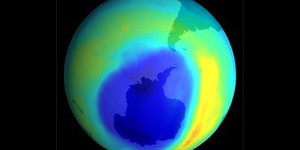Tenth Grade, Weather & Atmosphere Science Projects (6 results)
Everybody talks about the weather, but nobody does anything about it.
- Charles Dudley Warner
Weather and atmospheric science offer lots of opportunities for interesting explorations. It's a satisfyingly complex area, with lots of online resources so you can make your project as easy or as advanced as you want. And when you're done, you'll have a science fair project everyone can talk about.
|
Select a resource
Sort by
|
Have you ever noticed that on a hot day, it's more comfortable to wear a light-colored shirt than a dark one? Or that it's cooler in a park than walking down a street? This happens because different surfaces absorb and reflect heat in different ways. Urban heat islands are parts of cities where man-made surfaces like pavement and buildings replace natural surfaces like grass and trees. In this project, you will use temperature and satellite data to see if certain areas in a city have higher…
Read more
Featured
Have you heard that garlic powder is supposed to inhibit the growth of bacteria? Which do you think would make a better disinfectant: a solution of garlic powder or a solution of bleach? This project shows you a straightforward way to compare the effectiveness of different disinfectants (or other antimicrobial agents), by measuring zones of inhibition on a culture plate.
Read more
Before you head for school for the day, you might check the weather to see whether or not you need to wear a jacket or bring an umbrella. It is pretty easy for you to check the TV or internet to see what the weather will be like today, tomorrow, or even next week. The modern-day science of meteorology, or studying and predicting the weather, has many advanced tools at its disposal that make it easy for you to get this information.
How did people predict the weather before the invention of…
Read more
The ozone layer is important for blocking most of the harmful radiation that comes from the sun. You can find maps of the ozone layer and compare different regions of the globe for ozone coverage. Where are the problem areas? Is there a difference in ozone coverage between different hemispheres? Between populated and un-populated areas? In atmospheric regions over land masses or over bodies of water? Some scientists think that aerosols in the air are breaking down the ozone layer. You can do…
Read more
Many continents contain large mountain ranges that divide the continent into different regions. In the U.S. the Rocky Mountains mark the continental divide. The presence of a large mountain range can have a big effect on seasonal weather patterns. Also, the weather and climate on one side of a mountain range may be very different from weather and climate on the other side of the range. In the case of the Rocky Mountains, the western slope and eastern slope each have very different climates…
Read more
The Sun is the ultimate source of the energy that powers weather systems on Earth. Geomagnetic storms are sun-powered storms in the upper atmosphere, arising from energized particles that are periodically ejected by the Sun. Among other effects, geomagnetic storms can wreak havoc with earth-orbiting satellites, and disrupt satellite communications. The global positioning system (GPS) is a network of 24 earth-orbiting satellites that constantly sends radio signals through the earth's…
Read more
New
Artificial intelligence (AI) programs can now generate photorealistic pictures of people who do not exist in the real world. How can you tell if a picture is of a real person or a fake, AI-generated person? What features of the picture do people use to decide whether the face is real or AI-generated? In this project, you will explore these questions as you ask volunteers to look at both real and AI-generated pictures of human faces.
Read more
Wind can make a cold day colder, or a hot day more pleasant. Use weather data to test the effect of wind on the temperature. How much of a change on the perceived temperature can the wind make? How is wind shear calculated? How can a wind barrier, like a wind breaker, keep you warm even if there is no insulating material? Build an instrument to measure wind speed or direction. (FI, 2006; GLOBE, 2006; NCAR, 2006; NOAA, 2006; Unisys, 2006; Weather Underground, 2006; WMO, 2006)
Read more
|
Explore Our Science Videos
How to Make Slime
How Strong Is Your Hair? – STEM Activity
Magic Triangles - Fun Math Puzzles with Increasing Difficulty









